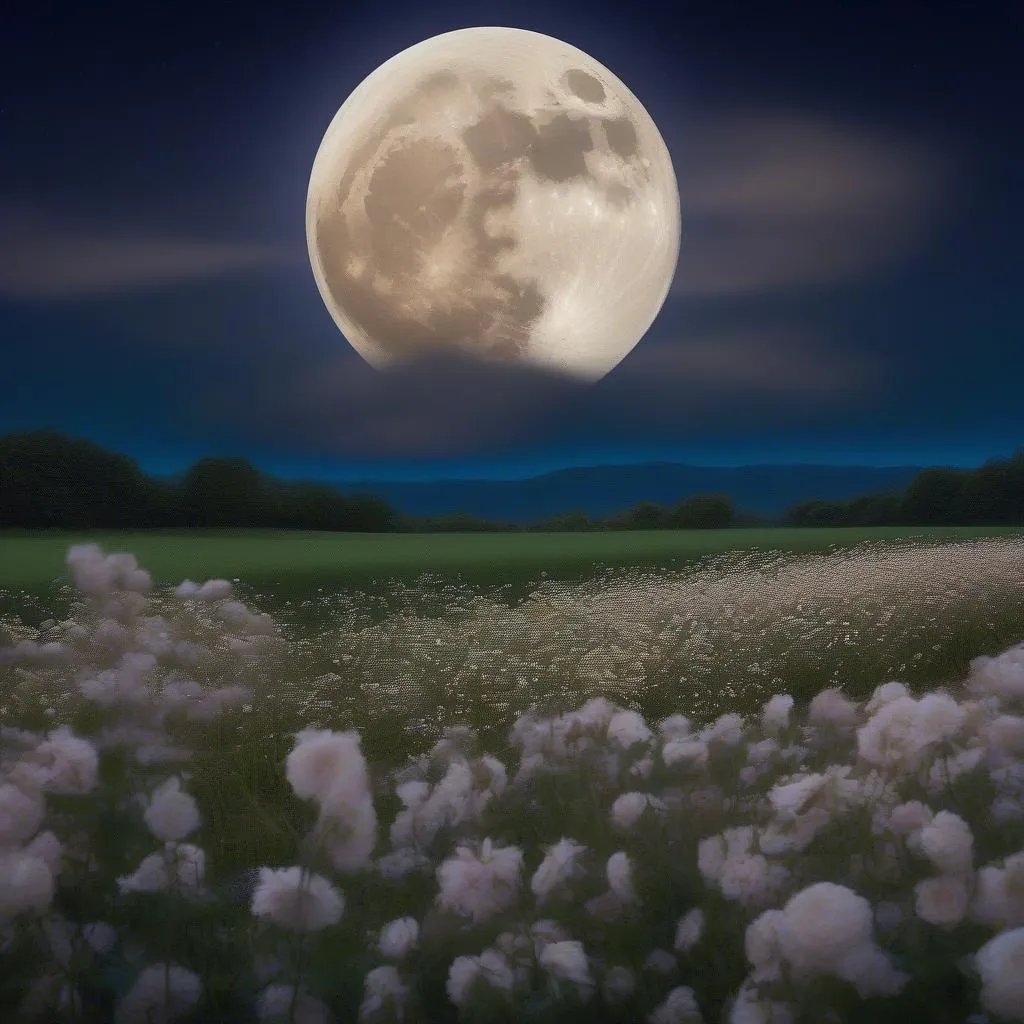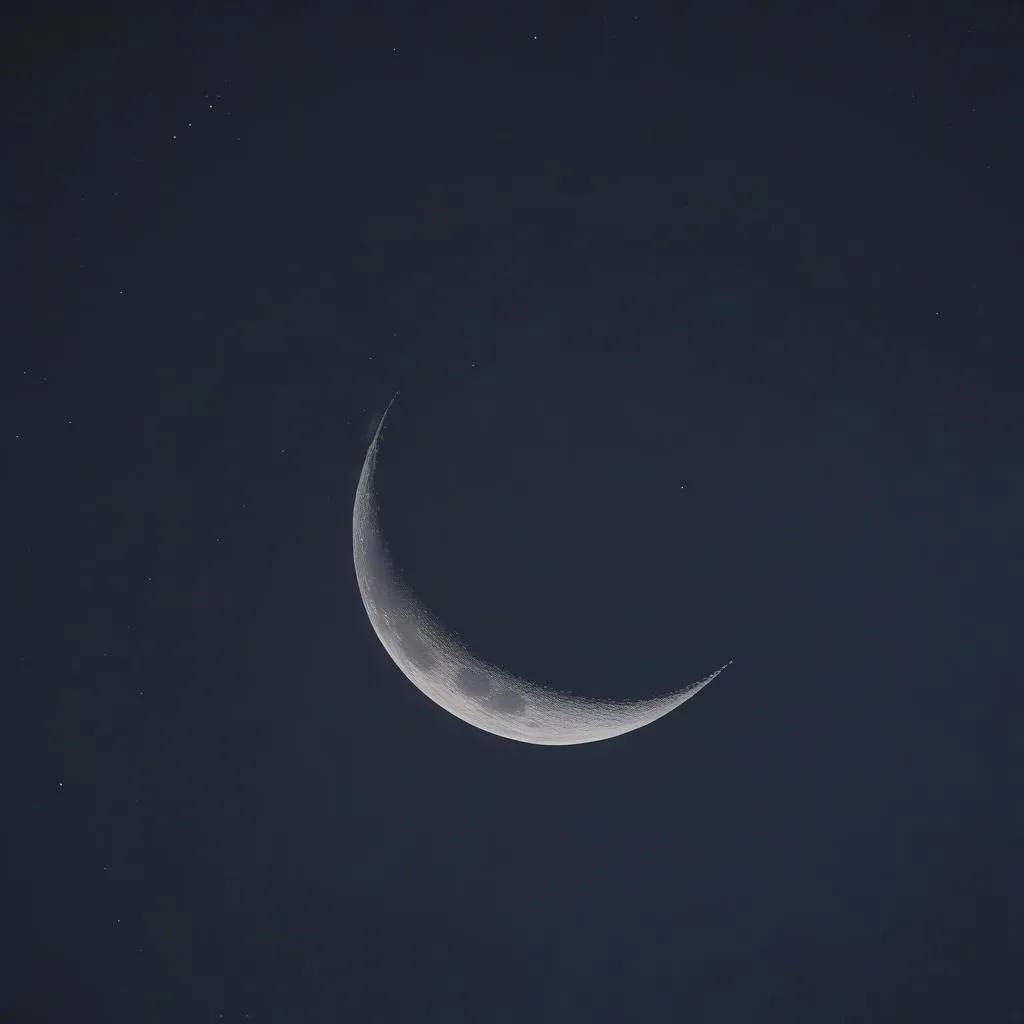“Where does the moon come from?” is a naive question that generations of children have wondered. From childhood, every night looking up at the vast sky, the shimmering, magical moonlight has sparked our curiosity, urging us to learn about the origin of that miraculous light. Today, we will explore the journey of understanding the moon, and especially how to turn the question “Where does the moon come from?” into an engaging lesson plan for preschoolers.
1. “Where Does the Moon Come From?” Lesson Plan – A Journey to Explore the Universe
What is a Lesson Plan?
A lesson plan is a lesson outline, a “map” guiding teachers and students to knowledge effectively. The “Where Does the Moon Come From?” lesson plan will be an exciting “map,” taking preschoolers on a fascinating journey to explore the universe.
Objectives of the Lesson Plan
The “Where Does the Moon Come From?” lesson plan aims to achieve the following objectives:
- Cognitive Development: Help children understand the Earth’s position in the Solar System, understand the Moon, the Moon’s movement around the Earth, as well as the relationship between the Earth and the Moon.
- Language Development: Practice expression, storytelling, and using rich and diverse language when describing the Moon.
- Thinking Skills Development: Encourage children to ask questions, reason, and come up with unique ideas about the Moon.
- Emotional Development: Help children appreciate the beauty of the Moon, love nature, country, and people.
Lesson Plan Content
The “Where Does the Moon Come From?” lesson plan can be divided into several parts, each focusing on specific content:
- Part 1: Introduction to the Moon:
- The story “Where Does the Moon Come From?” – Use illustrations, fairy tales, songs, and interactive games to attract children’s attention.
- Introduce the shape, color, and size of the Moon.
- Share some basic knowledge about the Moon: The Moon is a natural satellite of the Earth, the Moon does not emit light itself but reflects sunlight, the Moon moves around the Earth…
- Part 2: Exploring the Moon:
- Conduct experiential activities:
- Observe images of the Moon through a telescope.
- Practice using a Moon and Earth model to illustrate the Moon’s movement around the Earth.
- Play the game “Finding the Moon” – Children will learn about the phases of the Moon (waning moon, full moon, crescent moon) and how they change over time.
- Creative activities:
- Drawing, clay modeling, collage about the Moon.
- Writing poems, composing songs about the Moon.
- Conduct experiential activities:
- Part 3: Applying Knowledge:
- Tell stories about the Moon in Vietnamese culture: The fairy tale “Hang Nga and Chu Cuoi,” the poem “Moonlight” by Nguyen Duy…
- Mention the Moon’s effects on human life: Influence on tides, animal reproductive cycles…
Notes When Designing Lesson Plans
- Choose content appropriate for the age of preschoolers.
- Use appropriate teaching methods, combining various forms of activities to create excitement for children.
- Create a joyful and comfortable atmosphere during class.
- Assess children’s learning outcomes through activities in class.
2. “Where Does the Moon Come From?” Lesson Plan – Connecting with Spirituality and Culture
Spirituality:
Vietnamese people from ancient times to the present have always had a special respect for the Moon. Moonlight is seen as a symbol of purity, nobility, representing longevity and luck. The story of Hang Nga, a beautiful fairy living on the moon, has become a part of the nation’s traditional culture. Such stories about the Moon have contributed to creating a mysterious and fascinating mythological world, and at the same time, help children form good moral values.
Culture:
The Moon is an endless source of inspiration for Vietnamese art and culture. From poetry, music, painting to traditional festivals, the image of the Moon is always present and honored. On full moon nights, Vietnamese people often organize lantern processions, Mid-Autumn Festival feasts, and enjoy melodious tunes together, contributing to creating a warm, united, and reunited atmosphere.
3. “Where Does the Moon Come From?” Lesson Plan – A Journey of Continuous Creativity
The “Where Does the Moon Come From?” lesson plan can be transformed and creatively adapted in many ways to suit different ages, conditions, and specific goals.
Preschool education expert Nguyen Thi Thanh Mai in the book “Preschool Education – Nurturing the Future” shared: “A lesson plan is not a rigid template but a tool to support teaching. Teachers can flexibly adjust the lesson plan to suit the reality and needs of students.”
4. The Story of “Where Does the Moon Come From?”
Little Minh, at 5 years old, one day looked up at the night sky and innocently asked his mother: “Mom, where does the moon come from?”. Minh’s mother smiled, “My dear, the moon is a natural satellite of the Earth, it does not emit light itself but reflects sunlight.”
Minh’s eyes widened in surprise. He asked again: “Then why is the moon round and sometimes crescent?”. Minh’s mother patiently explained: “The moon moves around the Earth, sunlight shines on the moon at different angles, so we see the moon as round, crescent, or sickle-shaped.”
Minh listened intently, his eyes sparkling. He understood that the Moon is not just a shimmering light but also a magical planet, containing so many wonders. From then on, little Minh always spent a lot of time observing the Moon, learning about the vast universe.
5. Conclusion
The “Where Does the Moon Come From?” lesson plan is an exciting journey of exploring the universe for preschoolers. The lesson plan not only helps children understand the Moon but also helps them develop comprehensively in terms of cognition, language, emotions, and thinking skills.
Let’s join us in creating useful and creative lesson plans so that generations of Vietnamese children can access scientific, cultural, and spiritual knowledge effectively and engagingly.
 Full moon image
Full moon image
 Crescent moon image
Crescent moon image